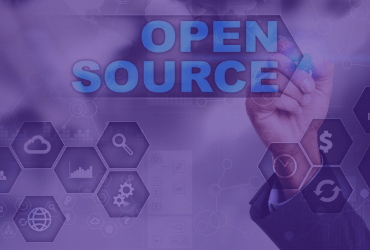Developing a great product starts with choosing the right programming language. Today, developers have more options than ever when it comes to coding advanced, edge-ready programs and platforms. Here are the 12 most popular programming languages developers have been using over the past 12 months.
PHP
PHP stands for Hypertext Preprocessor. It is a server-side scripting language, and was originally designed for web development. Today, however, it is also used for general-purpose programming purposes.
The primary advantages of PHP include its high capacity for creating dynamic and interactive web pages and programs, such as standalone graphical applications. It’s free to use. PHP 7.2 is the latest major release of the language, released in November 2017.
JavaScript
JavaScript is one of the three core technologies that make up the internet as we know it, along with CSS3 and HTML5. JavaScript provides a foundation for web interactivity. It is one of the fundamental building blocks of modern websites and web applications.
JavaScript as a language is event-driven, functional, and imperative. It supports both prototype-based and object-oriented coding styles. Many different offshoots of JavaScript exist, including Angular, NodeJS, and more.
NodeJS
NodeJS is a cross-platform JavaScript environment. It was built to execute JavaScript code outside of browsers, particularly on web servers. NodeJS is designed to create a “JavaScript everywhere” environment, where developers can use the same language for both server-side and client-side scripts.
This distinguishes NodeJS from JavaScript, which typically only runs parallel to HTML and is not used for server scripting. It’s governed by the open-source NodeJS foundation, and is used by major companies including Netflix, PayPal, Walmart, and more.
HTML5
HTML5 is the latest iteration of HTML, short for Hypertext Markup Language. Alongside JavaScript and CSS, HTML5 is a major building block for all webpages and web apps.
HTML5 introduced many features that are now indispensable in the world of web development. These include support for JavaScript APIs, native video support and playback, digital rights management (DRM) technologies, and support for low-powered mobile devices.
HTML5 was first released in October 2014. The latest iteration is HTML 5.2, which was released in December 2017.
Python
Python is a general-purpose programming language. It supports a number of different coding paradigms, from object-oriented to imperative, functional and procedural. First developed in 1990, the latest release, Python 3, was released in December 2008.
It is notable for being easily readable and simple to use, but having enormous extensibility and power, which makes it appropriate for almost any development project.
Ruby
Ruby is a programming language that was developed in the mid-90s. It is designed to be intuitive and easy to understand for experienced programmers. Ruby features a dynamic and interpreted architecture. It is also a reflected, object-oriented coding language.
Ruby is often compared to Python, as both languages are extremely versatile, yet approachable both for new programmers and experienced developers alike.
Scala
Scala is a programming language that was designed to address many of the fundamental criticisms of Java. It’s a general-purpose language with support for functional programming and it uses a strong static type system.
Scala is designed to be very concise and portable. It compiles to Java bytecode, providing language interoperability with Java. However, Scala has a number of features, like operator overloading and raw strings, that cannot be found in Java.
CSS3
Along with HTML5 and JavaScript, CSS3 is one of the primary building blocks of the internet as we know it. CSS stands for Cascading Style Sheets. It works with HTML5 to provide styling and visual appeal for web pages created in HTML.
CSS3 has a number of features intended to help provide developers and designers with more options when creating web pages and apps, including support for rounded corners, shadows, transitions and animations, mobile support, and much more.
Golang
Golang, a term referring to “Go Language” was developed by Google, and released in 2009. It’s free and open source, and similar in many ways to C, as it’s a statically typed and compiled language.
Golang has been used for many different open-source applications, including Docker, which has become the de-facto standard for container-based development. Companies using Golang include Google, Dropbox, Netflix, Uber, and more.
Rust
Rust was developed in partnership with the Mozilla Foundation. It is free and open-source. It also shares a similar syntax to C++. However, Rust is designed to support highly safe and reliable systems, and preserve system integrity.
Features that make rust unique include code re-usability, integrated safety checks, strong error handling features, and robust concurrency support for multi-threading.
Elixir
Elixir is built to run on the Erlang Virtual Machine (BEAM). It’s a multi-paradigm language that is process-oriented, functional and concurrent. Primarily, it is used to build distributed and fault-tolerant platforms. Moreover, it is made to be highly agile and extensible, allowing for rapid scalability.
Because it runs on the Erlang Virtual Machine, Elixir is highly efficient and optimized, allowing for faster iterations and improved server performance. It is typically used in parallel with other programming languages. Some popular companies using Elixir include Discord, Pinterest and Moz.
TypeScript
Typescript was developed by Microsoft as a syntactical superset of Javascript. It adds static typing to the language, as a way to eliminate some of the shortcomings of the language when developing large-scale applications.
By using custom tooling and a Javascript-compatible compiler, TypeScript extends the usefulness of JavaScript, while maintaining its basic functionality. It seamlessly works for developing both client-side and server-side JavaScript applications.
Is Your Programming Language the Right Tool for Your Job?
Choosing a programming language, framework, and platform is one of the most critical parts of any project. Take your time, do some research, and evaluate the pros and cons of each language. Our best advice is to ask for help. Join a forum, ask as many questions as necessary or consider hiring an outside consultant. You’re sure to make the right decision for your next project.
Are you looking for an edge cloud platform that integrates your programming language? You may want to consider Ormuco. Click here to learn more.





